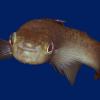As a small scale producer of bluegill, yellow perch, black crappie, tilapia, trout, and in the past smallmouth bass, I have hatched all my fish in small 1/10 acre ponds, and then brought the fingerlings inside to circular approximately 160 gallon tanks to feed train with the exception of the trout. It's involves filling and fertilizing a pond, and allowing the broodfish to do their thing. Then come back and seine the fry or fingerlings out and feed train indoors in small recirculating tanks.
However, for the few hundred fish of each species I need annually for my small niche market providing frozen trophy size fish for fellow taxidermists all over the country, the ponds are labor intensive with the seining, draining, and refilling. Not to mention the use of lots of water and the pumping costs both well water and dewatering. I'd rather use the ponds for holding ponds for broodfish. Would like to consider spawning bluegills, crappies, and yellow perch egg strands in an aquarium indoors. I don't' think I'll have a problem with the spawning and egg hatching, but as many of you know the centrarchid and percid larvae need live feed initially vs. for instance tilapia that will feed on fine artificial feed from the get go.
Are live brine shrimp small enough for larvae bluegill and crappie? I assume the fish fry initially have a yolks sack right? I've never hatched brine shrimp, but it appears relatively easy from what I've read. If so, it seems it wouldn't be difficult to take the fish larvae from the brine shrimp to fry powder size artificial feed once they are large enough to ingest the fry powder? I've had pretty good luck training pond hatched centarchids and percid fingerling species to accept artificial feed.
Look forward to hearing feedback from folks here with experience with this. No doubt centrarchid has lots of experience with this! Things like optimum aquarium size and substrate would be helpful too.
Thanks!










